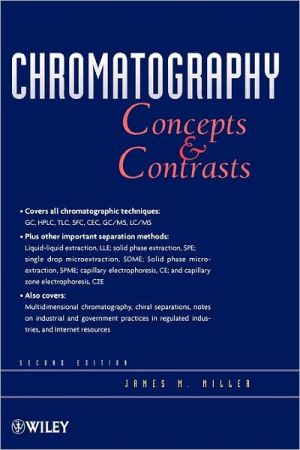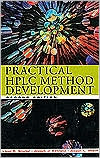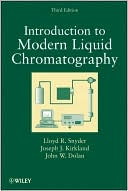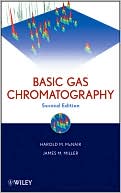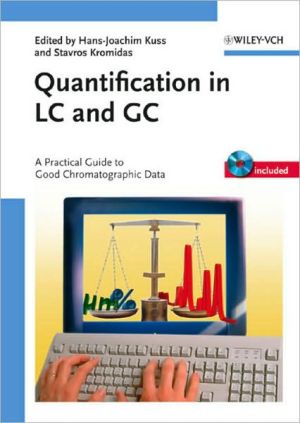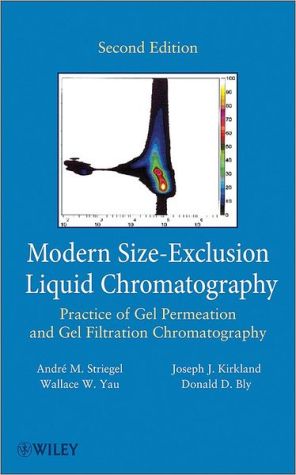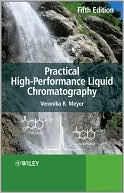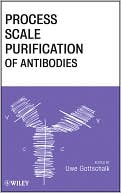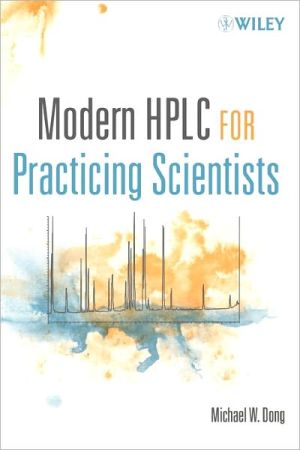Chromatography: Concepts and Contrasts
The first edition of Chromatography: Concepts and Contrasts, published in 1988, was one of the first books to discuss all the different types of chromatography under one cover. The second edition continues with these principles but has been updated to include new chapters on sampling and sample preparation, capillary electrophoresis and capillary electrochromatography (CEC), chromatography with mass spec detection, and industrial and governmental practices in regulated industries.\ \ Covers...
Search in google:
ChromatographyConcepts and ContrastsCovers all chromatographic techniques:GC, HPLC, TLC, SFC, CEC, GC/MS, LC/MSPlus other important separation methods:Liquid-liquid extraction, LLE; solid phase extraction, SPE;single drop microextraction, SDME; Solid phase micro- extraction, SPME; capillary electrophoresis, CE; and capillary zone electrophoresis, CZEAlso covers:Multidimensional chromatography, chiral separations, notes on industrial and government practices in regulated industries, and Internet resourcessecond editionJames M. MillerA Classic On All Of The Major ChromatographicTechniques—Now Fully UpdatedStill a popular text today, the first edition of Chromatography: Concepts and Contrasts was one of the first books to cover all of the different types of chromatography. This new Second Edition offers the latest information on the topic while preserving the clear, unified approach that has made the original a classroom favorite. Chromatography: Concepts and Contrasts, Second Edition presents the theoretical base common to various chromatographic methods, giving readers a set of general concepts for a broad understanding of the practice before moving on to discuss specific techniques. It covers gas chromatography (GC), liquid chromatography in columns (LC), and thin layer chromatography (TLC), as well as related topics such as extraction, solid phase extraction, solid phase microextraction, and mass spectrometry. The resulting text combines technical depth and comprehensiveness with accessible language and clear descriptions.New material covered in this Second Edition includes:Sample preparationCapillary electrophoresis and capillary electrochromatographyChromatography with mass spectrometric detectionApplications in chemistry, biology, and other areasIndustrial and government practices in regulated industriesInternet resources for chromatographersWhether used as a graduate or upper-level undergraduate textbook, or as a guide for professionals, Chromatography: Concepts and Contrasts, Second Edition provides the most concise, comprehensive, and up-to-date chromatography resource available today.
1Impact of industrial and government regulatory practices on analytical chromatography12Introduction to chromatography353Band broadening and kinetics674Physical forces and interactions935Optimization and the achievement of separation1096Comparisons between chromatographic modes1177Gas chromatography1418Liquid chromatography in columns1839Quantitation : detectors and methods27710Chromatography with mass spectral detection (GC/MS and LC/MS)30911Liquid chromatography on plane surfaces33112Qualitative analysis35313Capillary electrophoresis and capillary electrochromatography36514Sample preparation38715Special applications42316Selection of a method463App. AICH glossary475
\ From the Publisher"Of course, I found a few mistakes, but not enough to criticize what is a useful, and, if not unique, at least a satisfying alternative approach to introducing a broad audience to the science, practice, and purpose of chromatography in a global context." (Chromatographia, August 2010)\ …a practical, hands-on approach…" (CHOICE, July 2005)\ "…an excellent introduction to all the chromatographic techniques for both the industrial practitioner and the…student because of its unified treatment, its modern approach, and up-to-date references." (Journal of the American Chemical Society, June 29, 2005)\ "Professor Miller should be congratulated for the book...should be on the shelf of every practicing chromatographer...students taking separations science courses could also use it as their standard textbook." (Chromatographia, February 2005)\ \ \
